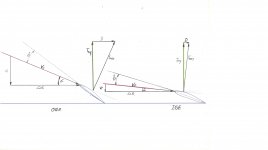As someone who self-taught in the old Bensen way, I logged a lot of hours under power at under 10 ft. off the runway.
Adding to my scores of hours in ground effect was the fact that I started out with a 1500 cc VW, which would not fly out higher than ground effect at any airspeed! Yet it would fly all day IN ground effect (at under 10 ft.). I'd call that a "tangible" (noticeable) benefit, though not a very useful one.
Before Vermont's winter climate moderated in recent years, Lake Champlain would freeze over, all the way across to New York state most years. Buddy Bill Raub and I would layer up our clothing in February and go blasting about, just off the ice, for miles. This was a real treat. You could throttle back significantly and still maintain speed and altitude, just as Vance describes. The reduced noise from lower engine RPM was pleasant.
Some incoming air, of course, spills up through a gyro rotor disk; there is not a vacuum just above the disk. The physics of lift cannot work, however, without there being a net surplus of air molecules ending up below the level of the disk and a net shortage of them above it. Overall, the rotor deflects air down-and-back. The resulting downwash is quite visible (or, well, visualizable) behind a gyro flying low over grass or crops.
A rotor blade is a very ordinary wing. It makes lift the same way as any other wing. All wings create tip vortices, as some of the air pushed down by the wing squirts out and around the end of the wing. Making these little horizontal tornadoes soaks up power in an un-useful way. Partially blocking them adds to the efficiency of any wing, including a rotor blade.


